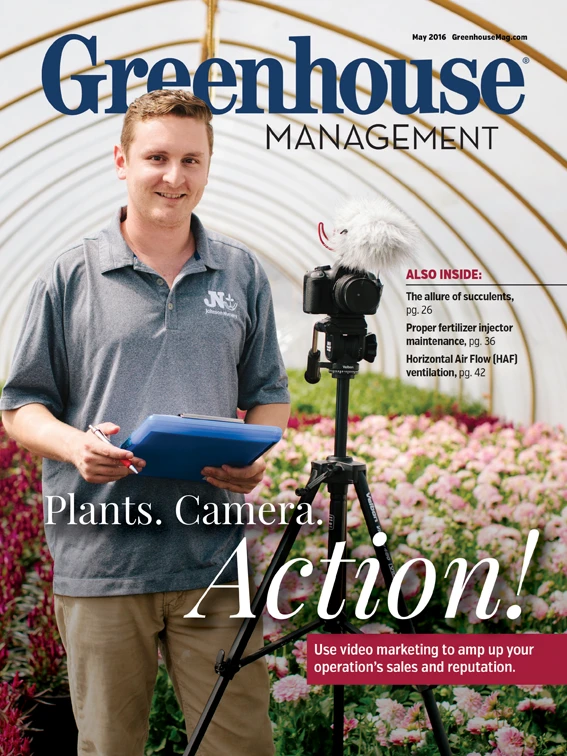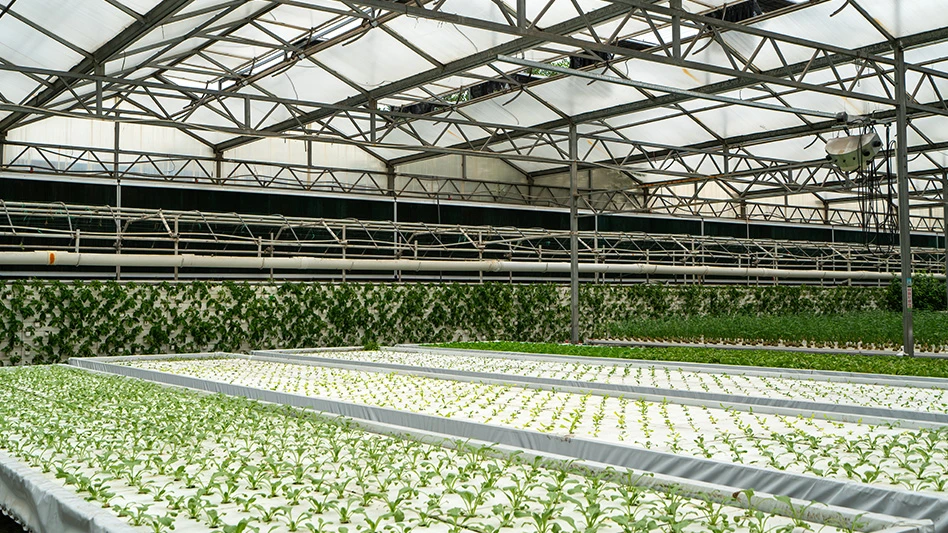

Christina Stembel operates her e-commerce floral company Farmgirl Flowers with less than 1 percent of waste — an idea that may seem nearly impossible after considering all of the product pushed through a greenhouse during the spring season. Yet, she makes her national floral bouquet arrangement and delivery service work effectively by purchasing all of her plant product in season, and only from American growers.
Stembel’s smart — albeit more expensive — buying decisions are made possible through a limited daily arrangement selection to avoid “hundreds of lackluster options” that may end up disappointing customers. And in this day and age of Millennial purchasers who value quality over quantity of choices, what could make more sense?
“Since we do daily arrangements, we don’t let people pick. We can use just about anything. So even though we have ‘one daily arrangement,’ we really have like six daily arrangements going on ... They’re always the same flower varieties, but there will be a lot of different color combinations,” she says.
The bouquets, packed tightly with overflowing florals and foliage in a spilling-over “farmgirl” style, are bundled together by a trademarked burlap wrap for a rustic chic appeal, then shipped anywhere in the United States. (In the San Francisco Bay Area, bouquets are delivered by bike messenger for an extra personal touch.)
Stembel came up with the idea while working at Stanford University, where she put on events for the law school from 2005 to 2010 and frequently purchased from big e-commerce florists. “I couldn’t understand, from a budget perspective, why we were spending so much money, and why the flowers cost so much for events,” she says. “We were spending $100 to $200 on each centerpiece for [a] table. It just seemed a bit exorbitant to me.” After budgets at the law school were cut during the recession, Stembel turned to local growers to purchase flowers, pumpkins and other live goods, and then designed the centerpieces herself.

She got to know the growers during that time purchasing their product for Stanford, and ran her idea for Farmgirl Flowers by a couple of them. “I was like, ‘What would you think if I started a flower company that only used American-grown flowers, and we did one daily arrangement, and didn’t give consumers any choice about the flowers?’” One countered, saying, “That’s crazy. First of all, we’ve lost the battle. Nobody cares whether it’s imported or not, and everybody uses imports … You can get it 16 cents a stem in Mexico or South America, why are people going to pay a dollar here for it?”
Stembel says that even in the San Francisco Flower Mart where her shop is located, local growers would bring in imported flowers, selling them side-by-side with what they do grow. “They all basically had a defeatist mentality of, ‘It’s just too late,’” she says.
But Stembel was ready to take on the challenge when she founded the business in December 2010 by studying the buying habits of her target customers and being transparent about where her flowers come from.
“Everything I’ve found in studying Millennial purchasing and consumer behavior of the Millennials [shows that] they want to feel like it’s a good quality for the money they’re spending. They’re a lot savvier customers. They just are. They have a lot more options readily available at their fingertips,” she says.
Stembel details the cause behind her operation on her website, and includes a variety of tidbits about the American-grown ideals within her social media posts, too, so that anyone purchasing from Farmgirl can easily discover Stembel’s story and the motivation behind her business.

The lack of waste helps greatly, allowing Stembel to spend more per flower from American farmers, while keeping her price point even with floral e-commerce giants at about $80 per bouquet.
And so far, her business model, dedication to American growers and of course, stylish eye for design, have paid off.
“Now, we’re one, if not the biggest customer with most of the growers we buy from. If we’re not the biggest, we’re second or third. They’ve definitely changed their minds a bit, and I can see more hope with them. And they’re growing more flowers.”

Explore the May 2016 Issue
Check out more from this issue and find your next story to read.
Latest from Greenhouse Management
- Hurricane Helene: Florida agricultural production losses top $40M, UF economists estimate
- No shelter!
- Sensaphone releases weatherproof enclosures for WSG30 remote monitoring system, wireless sensors
- Profile Growing Solutions hires regional sales manager
- Cultural controls
- University of Maryland graduate student receives 2024 Carville M. Akehurst Memorial Scholarship
- Applications open for Horticultural Research Institute Leadership Academy Class of 2026
- Meeting the challenge of pest management





